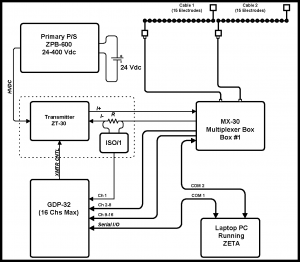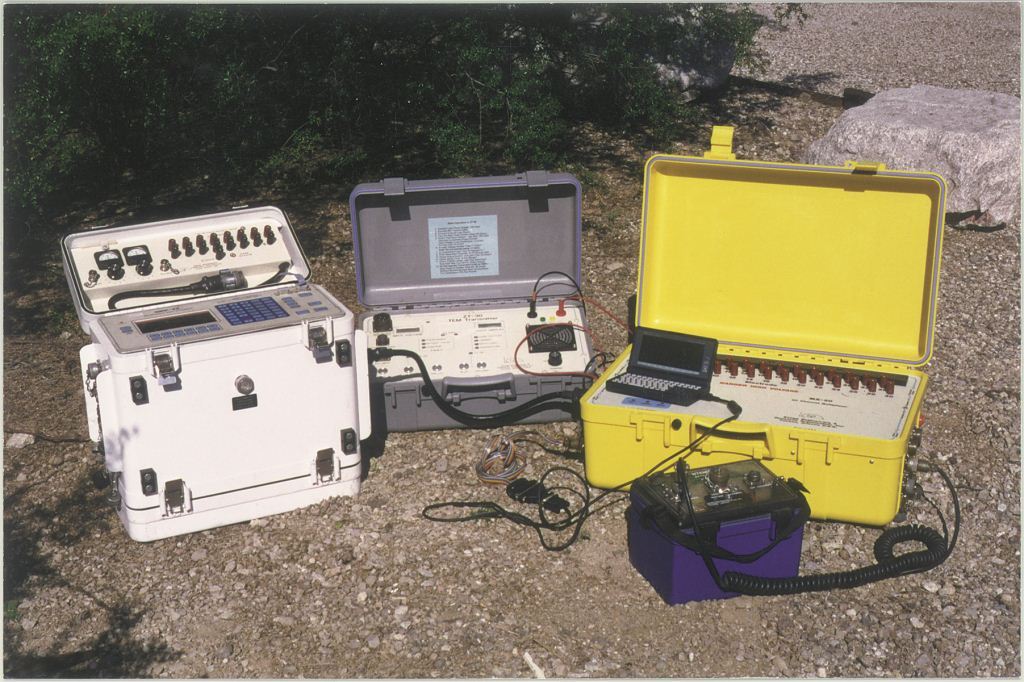ZETA™ system increases acquisition speed, decreases cost of an IP with resistivity survey for the shallow subsurface.
The Zonge Electrical Tomography Acquisition™ (ZETA) system acquires induced polarization AND resistivity data using up to 7680 electrodes in groups of 30 on one setup, making it economically possible to acquire the dense data sets needed to use electrical resistance tomography (ERT) for shallow-surface applications.
 Electrical resistance tomography and electrical impedance tomography equipment system
Electrical resistance tomography and electrical impedance tomography equipment system
In a ZETA™ instrument system, a Zonge GDP receiver is connected to a Zonge mutiplexer with 22-gauge insulated cadmium-bronze wire. The multiplexer allows computer-controlled switching of up to 30 transmitter and receiver locations. The signal source is a battery-powered transmitter. See ZETA system setup diagram.
ERT/EIT method overview
ERT is essentially DC resistivity data processed using modern tomography imaging techniques. When both resistivity and induced polarization (IP) are measured, the resulting data set relates to the complex impedance of the earth and the term EIT (Electrical Impedance Tomography) is sometimes used to describe the geophysics method.
ERT involves recording hundreds, even thousands of 4-electrode resistivity measurements that are possible between multiple strings of electrodes. For example, given two strings of 15 equally-spaced electrodes (30 electrodes total), there are 632 different dipole-dipole measurements that can be made (including all reciprocal measurements) involving transmitter and receiver dipoles, with a fixed length of two-electrode spacings.
The dense data collected provide the basis for solving sophisticated models of the conductivity distribution in the ground. To measure all of the desired transmitter-receiver electrode combinations requires a digital acquisition system that automatically switches both transmitter and receiver electrodes, and has multi-channel measurement capabilities.
ERT/EIT applications
ERT is used effectively in secondary petroleum recovery as a way to generate resistivity images of the geometric plane (the space) between two boreholes fitted with down-hole electrode strings.
ZETA, Zonge’s electrical resistance tomography equipment has expanded the use of ERT to additional environmental problems such as:
- Hazardous Waste Site Characterization
- Monitoring the Fluid-injection Processes
Involved in Waste-site Remediation - Plume Migration
- In-situ Leaching
- Heap-leach Monitoring
- Tank Monitoring
Contact us
Instrument Sales & Training
sales@zonge.com


